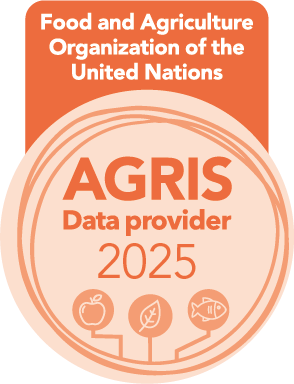Evaluation of Nutritional Knowledge and Lifestyle Habits of Orphan Children Residing in Different Institutes of Peshawar City
Nutritional Status and Dietary Practices of Orphan Children
DOI:
https://doi.org/10.54393/df.v6i1.158Keywords:
Orphaned Children, Anemia, Obesity, Micronutrient DeficiencyAbstract
The nutritional status of orphaned children residing in Peshawar orphanages is scantily documented. Objectives: To assess the eating habits, awareness of nutrition, and dietary status of children living in orphanages in the Peshawar area of Pakistan. Methods: The study involved 120 children, ages 5 to 15, and was conducted at three separate orphanages in Peshawar city. Food frequency questionnaires were used to collect data on the orphan children's socioeconomic situation, anthropometric measures (weight and height), eating patterns, physical activity, and food preferences. Additionally, data on biochemical tests used to measure hemoglobin levels (Hb) were gathered. To determine the orphans' knowledge, attitudes, and behaviours about dietary guidelines, another Knowledge, Attitude, and Practice (KAP) questionnaire was used. SPSS-26 was used to analyze the data that were collected. Results: According to the findings, 4%, 9%, and 3% of the children in the study were underweight, overweight, and obese, respectively. Additionally, 12% of the orphans were anemic, and 13% were stunted. Carbohydrates, fruits, vegetables, meat, legumes, dairy products, nuts, and beverages were consumed by the majority of the orphans. However, they also have a great preference for chips, pickles, and fast food. Conclusions: It was concluded that the current findings indicated poor diet habits and the occurrence of malnutrition among various children's orphanages of Peshawar. The present study reveals the link between malnutrition in orphans and the absence of particular care, which indicates the importance of intervention strategies to diminish the risk of malnutrition for this vulnerable group in the district of Peshawar.
References
Abid J, Alam I, Ahmad AM, Saeed RF, Farooq U. Dietary Inflammatory Potential of Mediterranean Diet Versus a Typical Traditional Pakistani Diet. Kurdish Studies. 2024 Aug; 12(5): 789 -794.
Alam I, Gul R, Chong J, Tan CT, Chin HX, Wong G et al. Recurrent Circadian Fasting (RCF) Improves Blood Pressure, Biomarkers of Cardiometabolic Risk and Regulates Inflammation in Men. Journal of Translational Medicine. 2019 Dec; 17: 1-29. doi: 10.1186/s12967-019-2007-z.
Alam I, Ali M, Farooq M. Assessment of Healthy Eating and Active Lifestyle on Campus Environment in A Univer-Sity Setting as Perceived by Students Using the Innovative Photo Voice Method, A Healthy Eating and Active Lifestyle (HEAL) study. Journal of Innovative Sciences. 2022; 8(1): 113-23. doi: 10.17582/journal.jis/2022/8.1.113.123.
Babar S, Arif T, Shakoor A, Ashraf T, Anwar T, Altaf SA et al. Nutritional Status and Dietary Habits of the Elderly Population in A Village in Punjab. Journal of Society of Prevention, Advocacy and Research King Edward Medical University. 2023 Jul; 2(2): 36-45.
Omma T, Gulcelik NE, Zengin FH, Karahan I, Culha C. Dietary Acid Load Associated with Hypertension and Diabetes in the Elderly. Current Aging Science. 2022 Nov; 15(3): 242-51. doi: 10.2174/1874609815666220328123744
Mohamed NE, Abdel-Wahed WY, Gomaa SM, Hosny MA. Prevalence and Pattern of Skin Disorders Among Children Living in Orphanages in Fayoum and Giza Governorates, Egypt. Tropical Medicine and Health. 2025 Jan; 53(1): 10. doi: 10.1186/s41182-025-00685-w.
Baarøy J, Webb D. Who Are the Most Vulnerable? Disaggregating Orphan Categories and Identifying Child Outcome Status in Tanzania. Vulnerable Children and Youth Studies. 2008 Aug; 3(2). doi: 10.1080/17450120802195359.
Farid MF, Rehman A, Khaliq AM, Ali N, Tareq AH. Malnutrition and Associated Risk Factors in Orphanages in Punjab, Pakistan: An Analytical Study. British Medical Journal Nutrition, Prevention and Health. 2024 Nov; 7(2): e000974. doi: 10.1136/bmjnph-2024-000974.
Ullah K, Shah R, Ullah I. Lived Experiences of Out-of-School Children Involved in Begging and Scavenging: A Study of Khyber Pakhtunkhwa, Pakistan. Vulnerable Children and Youth Studies. 2024 Jul; 19(3): 434-53. doi: 10.1080/17450128.2024.2389376.
Hunziker S and Blankenagel M. Research Design in Business and Management. Wiesbaden: Springer Gabler. 2021; 1. doi: 10.1007/978-3-658-34357-6_1.
Mondkar SA, Khadilkar V, Jahagirdar R, Kore V, Yewale S, Dange N et al. Comparison of Nutritional Status of Healthy Under-Five Indian Children Using Composite Index of Anthropometric Failure on WHO 2006 Versus 2019 Indian Synthetic Growth Charts. Indian Journal of Pediatrics. 2024 Jul; 91(7): 659-66. doi: 10.1007/s12098-023-04865-6.
Osei A, Pandey P, Spiro D, Nielson J, Shrestha R, Talukder Z et al. Household Food Insecurity and Nutritional Status of Children Aged 6 To 23 Months in Kailali District of Nepal. Food and Nutrition Bulletin. 2010 Dec; 31(4): 483-94. doi: 10.1177/156482651003100402.
Berr N, Nigatu Y, Dereje N. Nutritional Status Among Orphans and Vulnerable Children Aged 6 to 59 Months in Addis Ababa, Ethiopia: A Community-Based Cross-Sectional Study. BMC Nutrition. 2021 Dec; 7: 1-0. doi: 10.1186/s40795-021-00431-5.
Malla D, Acharya B, Nepali LB, KC A, Gurung P, Gupta NL et al. Malnutrition and Psychosocial Dysfunction among the Orphan and Vulnerable Children in Kaski District, Nepal. Progress in Medical Sciences. 2017; 12(23): 1. doi: 10.5455/pms.286489.
Zsakai A, Annar D, Koronczai B, Molnar K, Varro P, Toth E et al. A New Monitoring System for Nutritional Status Assessment in Children at Home. Scientific Reports. 2023 Mar; 13(1): 4155. doi: 10.1038/s41598-023-30998-x.
Al-Halani AA, Edrees WH, Alrahabi LM, Thabit JM, Al-Bahloul SM, Alwashali FA et al. Prevalence of Intestinal Parasites, Malnutrition, Anemia and Their Risk Factors among Orphaned Children in Sana'a City, Yemen. Universal Journal of Pharmaceutical Research. 2023 May. doi: 10.22270/ujpr.v8i2.923.
Baswaid SH and Al-Haddad AM. Parasitic Infections among Restaurant Workers in Mukalla (Hadhramout/Yemen). Iranian Journal of Parasitology. 2008; 3(3): 37-41.
Baheti H, Agarwal P, Baheti A, Loya G. Prevalence of Anemia in School Going Children in Washim District, Maharashtra State. Continuing Medical Education Journal Geriatric Medicine. 2025 Feb; 17: 48-56.
Berg T, Magala-Nyago C, Iversen PO. Nutritional Status Among Adolescent Girls in Children's Homes: Anthropometry and Dietary Patterns. Clinical Nutrition. 2018 Jun; 37(3): 926-333). doi: 10.1016/j.clnu.2017.03.020.
Kałużyński W, Kałucka A, Prokop A, Kikowski Ł. The Analysis of the Influence of Nutrition and Physical Activity on the Morphological and Functional Parameters of the Children’s Spine During Adolescence. Acta Balneologica. 2022; 64(3). doi: 10.36740/ABal202203108.
Downloads
Published
How to Cite
Issue
Section
License
Copyright (c) 2025 DIET FACTOR (Journal of Nutritional and Food Sciences)

This work is licensed under a Creative Commons Attribution 4.0 International License.
This is an open-access journal and all the published articles / items are distributed under the terms of the Creative Commons Attribution License, which permits unrestricted use, distribution, and reproduction in any medium, provided the original author and source are credited. For comments












